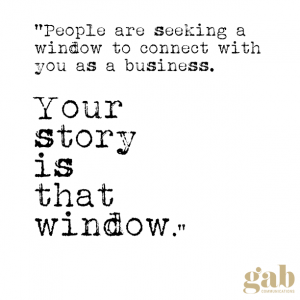“If you want to catch more fish, cast a wider net.”
Throughout my meetings with businesses over the last few weeks, I’ve noticed one common trait: As we first sit down to begin our conversation, they tell me they’re not really sure about the whole blog thing. More specifically, they don’t see how it can be of value to their business.
And hey, let me start off by saying that I get it – I get why they don’t get it. Especially with an older business that has primarily used traditional marketing (i.e. word of mouth, ads in the local paper), then I can certainly see why a blog might seem a little daunting or too cutting-edge. But the reasons a business should have a blog far outweigh the reasons it shouldn’t. Hold on to your hats folks, ‘cause I’m about to give you a brand spankin’ new perspective.
YOUR BUSINESS NEEDS A BLOG BECAUSE…
- It’s a promotional tool. I hate to be the bearer of bad news, but if your biz doesn’t have a blog (or if you’re not maintaining the one you have), then you’re missing out on free publicity. A blog is another method of putting your business’s name out there for everyone to come across. It doesn’t matter what kind of business you are – restaurant, independent consultant, photography, grocery store, consignment shop, etc. – a blog will promote your brand and amp up your online presence. Also, a recent HubSpot survey noted that companies that blog receive 97% more links to their website.
- It creates engagement. A blog is basically an open invitation for feedback from your audience. Great content is a magnet for comments, shares, likes, etc. Start off by writing an informative and interesting article about something related to your industry, and then share it on your social media pages. Your audience will do the rest!
- It shows off your expertise. You’re a professional and you want people to trust you, right? Blogging is a fantastic way to earn some of that trust because it puts your expertise, character, skills and creativity on full display. No matter what you think, your clients or potential clients really are genuinely interested in what you have to say. So show it off while earning some of their trust simultaneously.
- It makes you more valuable. Think about a few of your competitors. Do they have a well-maintained blog? Are they on top of any modern marketing methods that create a value for their customers? By staying on top of your blogging and marketing game, you’re setting a higher standard and creating more of a value for your clients.
- It fuels SEO. Blogging is the most natural way to optimize your site for search engines. You can shell out a small fortune to promote your page on Google, Facebook, etc. – or you can take the organic approach by creating consistent, valuable content that Google and other search engines will reward you for.
Still not sure if blogging could create value for your business? Call me, email me, text me, message me – I would love, love, love to chat with you about all the creative ways we could make a blog work for your biz.
 For the last decade, Hayley has been leaving her mark creatively on small, independently-owned businesses through editorial- and design-based marketing strategies. As a believer in the art of storytelling and the influence of a strong brand, her goal is to unlock the value that all small businesses possess and use it to their advantage using creative, strategic marketing methods.
For the last decade, Hayley has been leaving her mark creatively on small, independently-owned businesses through editorial- and design-based marketing strategies. As a believer in the art of storytelling and the influence of a strong brand, her goal is to unlock the value that all small businesses possess and use it to their advantage using creative, strategic marketing methods.







